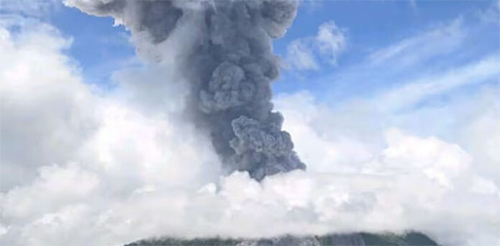
MANILA, Sept 11, 2024 (BSS/AFP) - Hundreds of people fled their homes in the
Philippines on Wednesday after a volcano spurted harmful gases, an official
said, as experts warned of a potential eruption.
About 300 residents of villages within four kilometres (2.5 miles) of the
Kanlaon volcano crater in the centre of the country were evacuated on Tuesday
as a precaution, the local government of nearby Canlaon City said.
The evacuees have taken temporary shelter at schools and community centres
away from the volcano, city information officer Edna Lhou Masicampo told AFP
on Wednesday.
"People from villages near the foot of the volcano have been complaining
about the strong smell of sulphur," Masicampo said, adding most of the
residents were farmers.
Classes were suspended and some tourist spots in the city of around 60,000
people were closed on Wednesday due to the volcano warning.
Kanlaon's daily average emission of sulphur dioxide almost tripled to 9,985
tonnes on Tuesday.
"This is the highest emission from the volcano recorded since instrumental
gas monitoring began," the Philippine Institute of Volcanology and Seismology
said in a statement.
"Current activity may lead to eruptive unrest," it added, putting residents
of the four villages at risk from red hot, swiftly moving ash clouds,
"ballistic projectiles, rockfalls" and other hazards.
The area was rocked by 337 volcanic quakes in the past 24 hours, the
institute said in a later update, which also included photos and videos of
plumes rising 1,000 metres (3,280 feet) into the sky from the volcano's peak.
Rising more than 2,400 metres above sea level on the central island of
Negros, Kanlaon is one of 24 active volcanoes in the Philippines.
It has erupted 15 times in the past nine years.
Three hikers were killed in August 1996 due to ash ejection from Kanlaon.
The state volcanology agency raised the alert level for the volcano in June
from one to two on a zero-to-five scale, warning more explosive eruptions
were possible.
The Philippines is located in the seismically active Pacific "Ring of Fire",
which contains more than half the world's volcanoes.